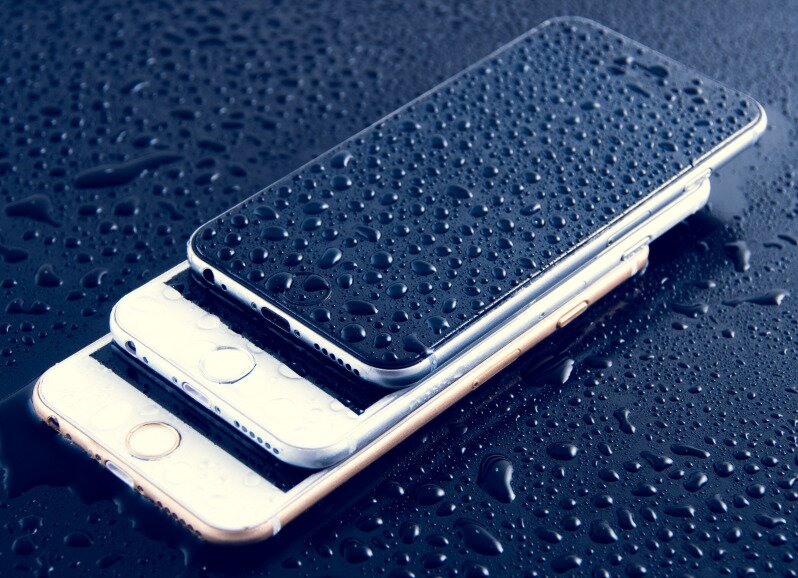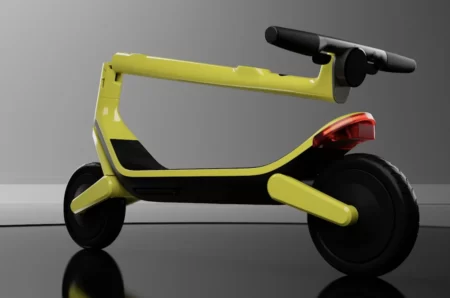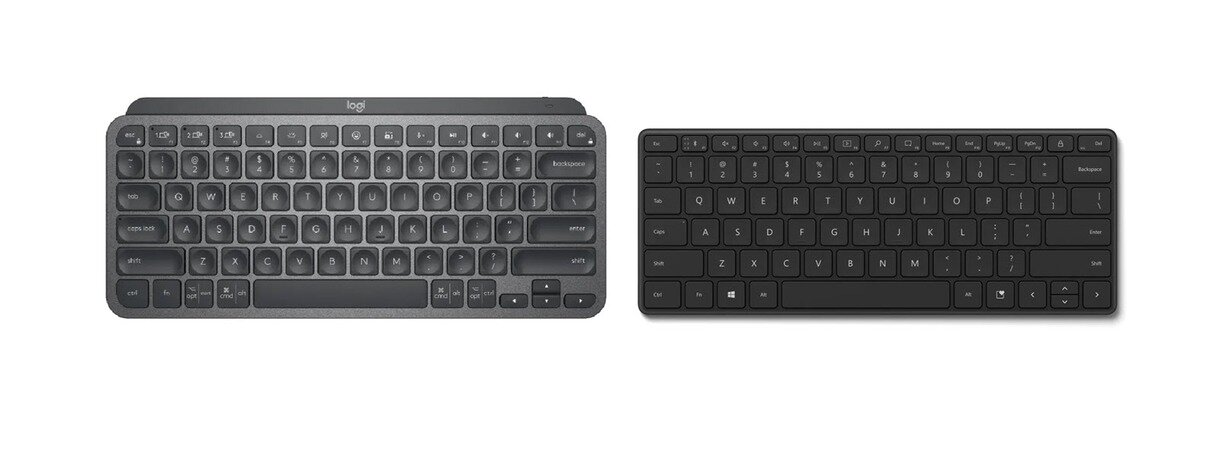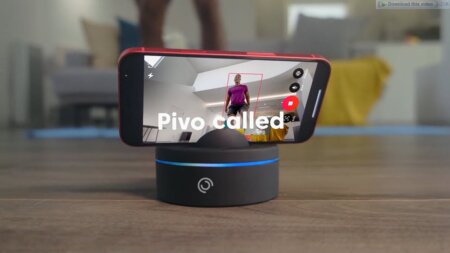This article provides the IP rating chart and explains each IP rating definition based on the international standard IEC 60529, which defines the degree of protection of equipment casing against the ingress of solids and liquids. The IP rating will verify that the equipment can function under specific circumstances after exposure to dust and water.
IP ratings do not cover chemical or erosion resistance, damages to finishing, or impact resistance, etc. The rating comprises two numbers as described below:
- The first number indicates the projection level against solid particles such as dust. The maximum level is 6.
- The second number indicates the protection level against liquids such as water. The maximum level is 8
- The bigger the number, the better the protection.
- The highest IP rating is IP69K. All tests with the letter “K” are defined by ISO 20653.
- Number X means not tested.
- Number 0 means not protected.
The following is a quick reference for the IP ratings.
Last Updated: 08 Oct 2021
How to use: Press CTRL-F to enter a search string for a specific rating in this list.
| IPXY | First Digit – SOLIDS | Second Digit – LIQUIDS | Remarks |
| IPX1 | Untested against solids | Protected against dripping water with vertically falling drops | |
| IPX2 | Untested against solids | Protected against dripping water when tilted up to 15 degrees from normal position. | The test details include a test duration of 10 minutes and a water equivalent to 1mm rainfall per minute. |
| IPX3 | Untested against solids | Protected from water spray less than 60 degrees from vertical. | The test details include a test duration of 10 minutes and a water equivalent to 3mm rainfall per minute. |
| IPX4 | Untested against solids | Protected from water spray from any direction, and including sweat and rain. | |
| IPX5 | Untested against solids | Protected from low-pressure water jets from any direction. | |
| IPX6 | Untested against solids | Protected from high-pressure water jets from any direction. | |
| IPX6K | Untested against solids | Protected from very high-pressure water jets from any direction. | |
| IPX7 | Untested against solids | Protected from water for 30mins. Depending on size of test sample, the highest point must be >150mm below water surface, or the lowest point must be >1m. | For example, if an object is 1m tall, then the top part must be submerged at least 150mm below surface. This means the lowest point is 1.15m deep. |
| IPX8 | Untested against solids | Protected from long-term immersion up to a specified pressure and depth greater than 1m. | Normally, at least 3m deep. Specs to be determined by manufacturers. |
| IPX9K | Untested against solids | Protected from steam-jet cleaning, i.e. close-range high pressure, high-temperature spray downs. | |
| IP1X | Protected from touch by hands greater than 50 millimeters. | Untested against liquid | |
| IP2X | Protected from touch by fingers and objects greater than 12 millimeters. | Untested against liquid | |
| IP3X | Protected from tools and wires greater than 2.5 millimeters. | Untested against liquid | |
| IP4X | Protected from tools and small wires greater than 1 millimeter. | Untested against liquid | |
| IP5X | Dust protected. Dust must not enter in sufficient quantity to interfere with the satisfactory operation of the equipment. | Untested against liquid | |
| IP6X | Dust-tight. Complete protection against dust ingress. A vacuum must be applied. Test duration of up to 8 hours based on airflow. | Untested against liquid | |
| IP00 | Not protected from solids. | Not protected from liquids. | |
| IP01 | Not protected from solids. | Protected against dripping water with vertically falling drops | |
| IP02 | Not protected from solids. | Protected against dripping water when tilted up to 15 degrees from normal position. | |
| IP03 | Not protected from solids. | Protected from water spray less than 60 degrees from vertical. | |
| IP04 | Not protected from solids. | Protected from water spray from any direction, and including rain. | |
| IP05 | Not protected from solids. | Protected from low pressure water jets from any direction. | |
| IP06 | Not protected from solids. | Protected from high pressure water jets from any direction. | |
| IP06K | Not protected from solids. | Protected from very high pressure water jets from any direction. | Seldom used |
| IP07 | Not protected from solids. | Protected from water for 30mins. Depending on size of test sample, the highest point must be >150mm below water surface, or the lowest point must be >1m. | For example, if an object is 1m tall, then the top part must be submerged at least 150mm below surface. This means the lowest point is 1.15m deep. |
| IP08 | Not protected from solids. | Protected from long term immersion up to a specified pressure and depth greater than 1m. | Normally, at least 3m deep. Specs to be determined by manufacturers. |
| IP09K | Not protected from solids. | Protected from steam-jet cleaning, i.e. close-range high pressure, high-temperature spray downs. | |
| IP10 | Protected from touch by hands greater than 50 millimeters. | Not protected from liquids. | |
| IP11 | Protected from touch by hands greater than 50 millimeters. | Protected from condensation. | |
| IP12 | Protected from touch by hands greater than 50 millimeters. | Protected from water spray less than 15 degrees from vertical. | |
| IP13 | Protected from touch by hands greater than 50 millimeters. | Protected from water spray less than 60 degrees from vertical. | |
| IP14 | Protected from touch by hands greater than 50 millimeters. | Protected from water spray from any direction, and including rain. | |
| IP15 | Protected from touch by hands greater than 50 millimeters. | Protected from low pressure water jets from any direction. | |
| IP16 | Protected from touch by hands greater than 50 millimeters. | Protected from high pressure water jets from any direction. | |
| IP17 | Protected from touch by hands greater than 50 millimeters. | Protected from water for 30mins. Depending on size of test sample, the highest point must be >150mm below water surface, or the lowest point must be >1m. | For example, if an object is 1m tall, then the top part must be submerged at least 150mm below surface. This means the lowest point is 1.15m deep. |
| IP18 | Protected from touch by hands greater than 50 millimetres. | Protected from long-term immersion up to a specified pressure and depth greater than 1m. | Typically, at least 3m deep. Specs to be determined by manufacturers. |
| IP20 | Protected from touch by fingers and objects greater than 12 millimetres. | Not protected from liquids. | |
| IP21 | Protected from touch by fingers and objects greater than 12 millimetres. | Protected from condensation. | |
| IP22 | Protected from touch by fingers and objects greater than 12 millimetres. | Protected from water spray less than 15 degrees from vertical. | |
| IP23 | Protected from touch by fingers and objects greater than 12 millimetres. | Protected from water spray less than 60 degrees from vertical. | |
| IP24 | Protected from touch by fingers and objects greater than 12 millimetres. | Protected from water spray from any direction, and including rain. | |
| IP25 | Protected from touch by fingers and objects greater than 12 millimeters. | Protected from low pressure water jets from any direction. | |
| IP26 | Protected from touch by fingers and objects greater than 12 millimeters. | Protected from high pressure water jets from any direction. | |
| IP27 | Protected from touch by fingers and objects greater than 12 millimeters. | Protected from water for 30mins. Depending on size of test sample, the highest point must be >150mm below water surface, or the lowest point must be >1m. | For example, if an object is 1m tall, then the top part must be submerged at least 150mm below surface. This means the lowest point is 1.15m deep. |
| IP28 | Protected from touch by fingers and objects greater than 12 millimeters. | Protected from long term immersion up to a specified pressure and depth greater than 1m. | Normally, at least 3m deep. Specs to be determined by manufacturers. |
| IP30 | Protected from tools and wires greater than 2.5 millimeters. | Not protected from liquids. | |
| IP31 | Protected from tools and wires greater than 2.5 millimeters. | Protected from condensation. | |
| IP32 | Protected from tools and wires greater than 2.5 millimeters. | Protected from water spray less than 15 degrees from vertical. | |
| IP33 | Protected from tools and wires greater than 2.5 millimeters. | Protected from water spray less than 60 degrees from vertical. | |
| IP34 | Protected from tools and wires greater than 2.5 millimeters. | Protected from water spray from any direction, and including rain. | |
| IP35 | Protected from tools and wires greater than 2.5 millimeters. | Protected from low pressure water jets from any direction. | |
| IP36 | Protected from tools and wires greater than 2.5 millimeters. | Protected from high pressure water jets from any direction. | |
| IP37 | Protected from tools and wires greater than 2.5 millimeters. | Protected from water for 30mins. Depending on size of test sample, the highest point must be >150mm below water surface, or the lowest point must be >1m. | For example, if an object is 1m tall, then the top part must be submerged at least 150mm below surface. This means the lowest point is 1.15m deep. |
| IP38 | Protected from tools and wires greater than 2.5 millimeters. | Protected from long term immersion up to a specified pressure and depth greater than 1m. | Normally, at least 3m deep. Specs to be determined by manufacturers. |
| IP40 | Protected from tools and small wires greater than 1 millimeter. | Not protected from liquids. | |
| IP41 | Protected from tools and small wires greater than 1 millimeter. | Protected from condensation. | |
| IP42 | Protected from tools and small wires greater than 1 millimeter. | Protected from water spray less than 15 degrees from vertical. | |
| IP43 | Protected from tools and small wires greater than 1 millimeter. | Protected from water spray less than 60 degrees from vertical. | |
| IP44 | Protected from tools and small wires greater than 1 millimeter. | Protected from water spray from any direction, and including rain. | |
| IP45 | Protected from tools and small wires greater than 1 millimeter. | Protected from low pressure water jets from any direction. | |
| IP46 | Protected from tools and small wires greater than 1 millimeter. | Protected from high pressure water jets from any direction. | |
| IP47 | Protected from tools and small wires greater than 1 millimeter. | Protected from water for 30mins. Depending on size of test sample, the highest point must be >150mm below water surface, or the lowest point must be >1m. | For example, if an object is 1m tall, then the top part must be submerged at least 150mm below surface. This means the lowest point is 1.15m deep. |
| IP48 | Protected from tools and small wires greater than 1 millimeter. | Protected from long term immersion up to a specified pressure and depth greater than 1m. | Normally, at least 3m deep. Specs to be determined by manufacturers. |
| IP50 | Dust protected. Dust must not enter in sufficient quantity to interfere with the satisfactory operation of the equipment. | Not protected from liquids. | |
| IP51 | Dust protected. Dust must not enter in sufficient quantity to interfere with the satisfactory operation of the equipment. | Protected from condensation. | |
| IP52 | Dust protected. Dust must not enter in sufficient quantity to interfere with the satisfactory operation of the equipment. | Protected from water spray less than 15 degrees from vertical. | |
| IP53 | Dust protected. Dust must not enter in sufficient quantity to interfere with the satisfactory operation of the equipment. | Protected from water spray less than 60 degrees from vertical. | |
| IP54 | Dust protected. Dust must not enter in sufficient quantity to interfere with the satisfactory operation of the equipment. | Protected from water spray from any direction, and including rain. | |
| IP55 | Dust protected. Dust must not enter in sufficient quantity to interfere with the satisfactory operation of the equipment. | Protected from low pressure water jets from any direction. | |
| IP56 | Dust protected. Dust must not enter in sufficient quantity to interfere with the satisfactory operation of the equipment. | Protected from high pressure water jets from any direction. | |
| IP57 | Dust protected. Dust must not enter in sufficient quantity to interfere with the satisfactory operation of the equipment. | Protected from water for 30mins. Depending on size of test sample, the highest point must be >150mm below water surface, or the lowest point must be >1m. | For example, if an object is 1m tall, then the top part must be submerged at least 150mm below surface. This means the lowest point is 1.15m deep. |
| IP58 | Dust protected. Dust must not enter in sufficient quantity to interfere with the satisfactory operation of the equipment. | Protected from long term immersion up to a specified pressure and depth greater than 1m. | Normally, at least 3m deep. Specs to be determined by manufacturers. |
| IP60 | Dust-tight. Complete protection against dust ingress. A vacuum must be applied. Test duration of up to 8 hours based on airflow. | Not protected from liquids. | |
| IP61 | Dust-tight. Complete protection against dust ingress. A vacuum must be applied. Test duration of up to 8 hours based on airflow. | Protected from condensation. | |
| IP62 | Dust-tight. Complete protection against dust ingress. A vacuum must be applied. Test duration of up to 8 hours based on airflow. | Protected from water spray less than 15 degrees from vertical. | |
| IP63 | Dust-tight. Complete protection against dust ingress. A vacuum must be applied. Test duration of up to 8 hours based on airflow. | Protected from water spray less than 60 degrees from vertical. | |
| IP64 | Dust-tight. Complete protection against dust ingress. A vacuum must be applied. Test duration of up to 8 hours based on airflow. | Protected from water spray from any direction, and including rain. | |
| IP65 | Dust-tight. Complete protection against dust ingress. A vacuum must be applied. Test duration of up to 8 hours based on airflow. | Protected from low pressure water jets from any direction. | |
| IP66 | Dust-tight. Complete protection against dust ingress. A vacuum must be applied. Test duration of up to 8 hours based on airflow. | Protected from high pressure water jets from any direction. | |
| IP67 | Dust-tight. Complete protection against dust ingress. A vacuum must be applied. Test duration of up to 8 hours based on airflow. | Protected from water for 30mins. Depending on size of test sample, the highest point must be >150mm below water surface, or the lowest point must be >1m. | For example, if an object is 1m tall, then the top part must be submerged at least 150mm below surface. This means the lowest point is 1.15m deep. |
| IP68 | Dust-tight. Complete protection against dust ingress. A vacuum must be applied. Test duration of up to 8 hours based on airflow. | Protected from long term immersion up to a specified pressure and depth greater than 1m. | Typically, at least 3m deep. Specs to be determined by manufacturers. |
| IP69K | Dust-tight. Complete protection against dust ingress. A vacuum must be applied. Test duration of up to 8 hours based on airflow. | Protected from steam-jet cleaning, i.e. close-range high pressure, high-temperature spray downs. |
References:
Jabra – IP Ratings
Sony – IP Ratings
Crompton Lamps
Treo – IPX4K, IPX6K and IPX9K
Wikipedia – IP Code IEC 60529
WaterProof Mark
| Water resistance rating | ISO | Suitability | Remarks |
| Water Resistant 3 atm or 30 m | ISO 2281:1990 | Suitable for everyday use. Splash/rain resistant. | Not suitable for showering, bathing, swimming, snorkeling, water-related work, fishing, and diving. |
| Water Resistant 5 atm or 50 m | ISO 2281:1990 | Suitable for everyday use, showering, bathing, shallow-water swimming, snorkeling, water-related work, fishing. Splash/rain resistant. | Not suitable for diving. |
| Water Resistant 10 atm or 100 m | ISO 2281:1991 | Suitable for recreational surfing, swimming, snorkeling, sailing, and water sports. | Not suitable for diving. |
| Water Resistant 20 atm or 200 m | ISO 2281:1992 | Suitable for professional marine activity, serious surface water sports, and skin diving. | Suitable for skin diving. |
| Diver’s 100 m | ISO 6425 | Minimum ISO standard (ISO 6425) for scuba diving at depths not suitable for saturation diving. | Diver’s 100 m and 150 m watches are generally old(er) watches. |
| Diver’s 200 m or 300 m | ISO 6426 | Suitable for scuba diving at depths not suitable for saturation diving. | Typical ratings for contemporary diver’s watches. |
| Diver’s 300+ m for mixed-gas diving | ISO 6427 | Suitable for saturation diving (helium enriched environment). | Watches designed for mixed-gas diving will have the DIVER’S WATCH xxx M FOR MIXED-GAS DIVING additional marking to point this out. |






